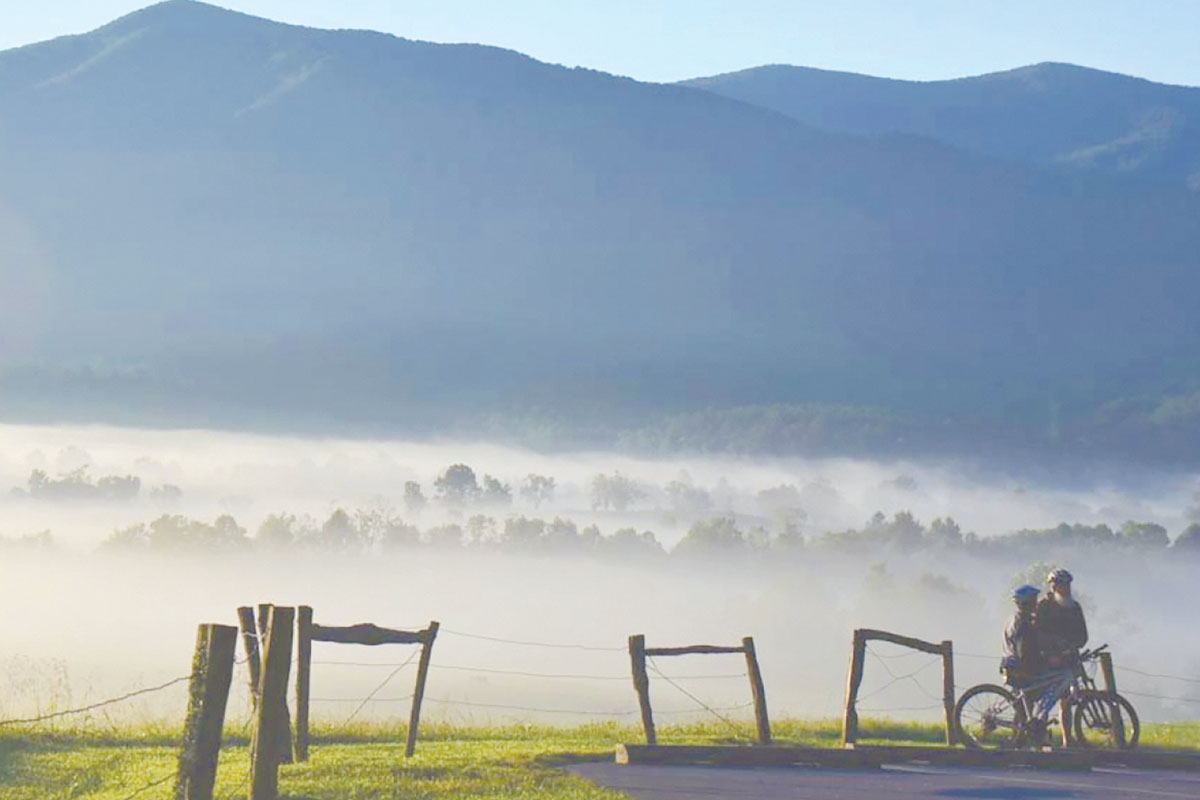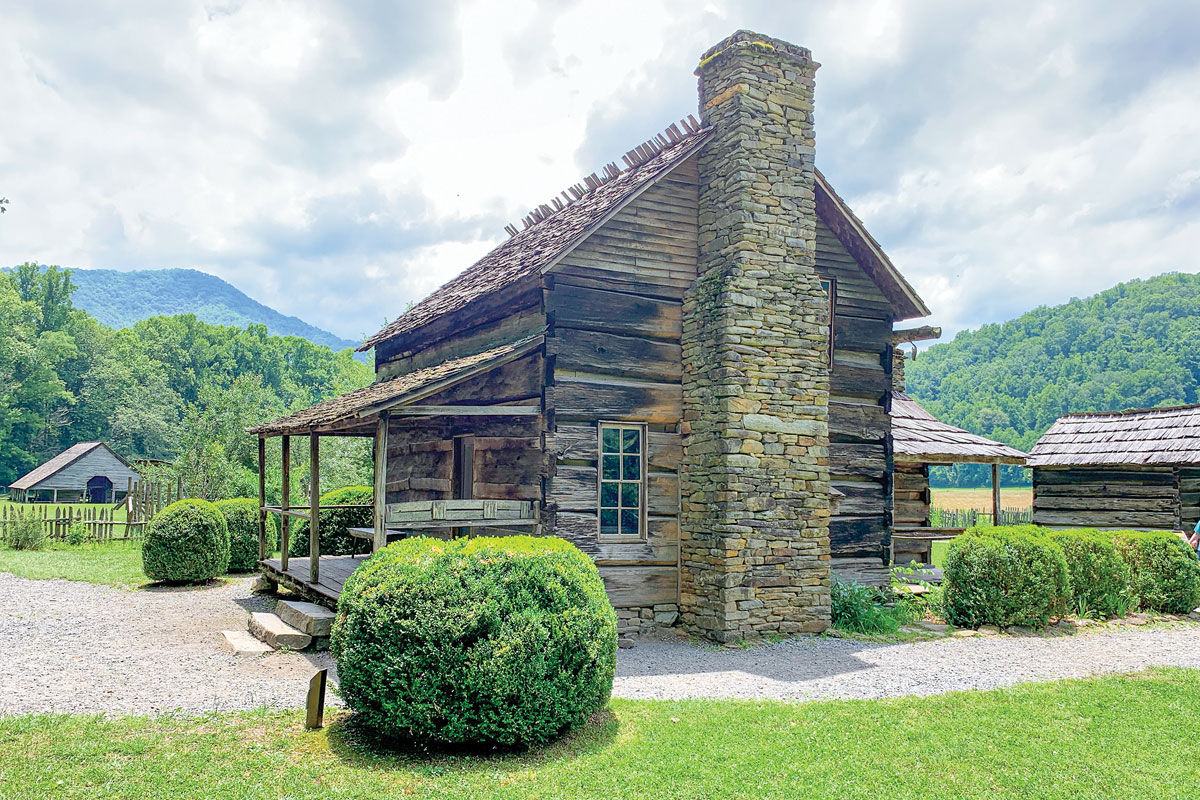Stuck in a rut: Too few jobs coming on line
Similar to other parts of the U.S., counties in Western North Carolina have been plagued with high unemployment rates and little job growth.
“We have a lot still unemployed,” said Vicki Gribble, head of Haywood County’s Employment Security Commission.
There are about 600 people still receiving unemployment checks in Haywood County, and only 29 jobs listed for the county on the state Employment Security Commission’s website. The clearinghouse of jobs is by no means all-inclusive: employers choose whether to post their openings with the agency. But it is a relevant indicator of the sparse job market.
And, the number of people getting unemployment checks does not even factor in the amount of jobless individuals who have maxed out their unemployment benefits.
As of late last week, Macon, Jackson and Swain counties showed similar signs of slow growth. The counties had 26, 29 and 10 full-time job openings listed, respectively.
“This is about average,” said Dale West, manager of the Employment Security Commission in those three counties. Some additional temporary and seasonal positions are advertised in summer and spring though, she said.
The majority open at the moment are for registered nurses, social workers and school jobs.
When people get laid off, West encourages them to be re-trained to do something else.
“Some of their jobs might not come back as they were,” West said.
Employment resources
Each county in North Carolina has an Employment Security Commission, which lists open positions in the county as well as providing employment services. Most of the positions require some specialized training and are in the manufacturing or medical fields. Visit www.ncesc.com, and click on the Individual Services tab to search for jobs in your area or profession.
Desperate for work, WNC residents flock to regional jobs fair
People once again lined up at the Biltmore Square Mall in Asheville last week, but this time they weren't waiting for hours to see Santa Claus. Instead, they were looking for a belated Christmas gift — a job.
The mall was the site of the largest job fair in the mountains, boasting more than 1,200 open positions. About 2,000 people showed up for the event, most of them members of the 10 percent of unemployed residents of North Carolina.
An older gentleman in a grey three-piece suit looked overwhelmed as he surveyed the seemingly never-ending rows of employers and possible employees that filled a vast majority of the mall.
Barbara Darby, who helped run the event put on by the Asheville Area Chamber of Commerce and Economic Development Coalition, said she was not surprised by the turnout.
SEE ALSO: Stuck in a rut: Too few jobs coming on line
"We are well aware of the large numbers looking for work," said Darby, a member of the Mountain Area Workforce Development Board.
People traveled from all around Western North Carolina — Haywood, Jackson, Macon, Swain, Yancey, Madison, Polk — in search of a job or a better opportunity.
"There are really no county lines when it comes to finding jobs," said Mark Clasby, executive director of Haywood County's Economic Development Commission. "People will really commute where the jobs are."
About 15 percent of Haywood County residents travel outside the county to work, Clasby said, and at least 3,000 people commute into Haywood County for work.
The dismal job market has forced some unemployed individuals to move.
During the past year, Tonya Turner, 40, packed up her belongings and moved from Haywood County to a place in Mars Hill with her son. She is looking for "a new start," she said.
Turner has been jobless for a year and has applied for more than 20 jobs during that time. She is looking for a position as a receptionist or in medical billing and has experience as an administrative employee.
The Potential Hires
While many participants put a face and a name on WNC's more than 8 percent unemployment rate, a number of people with current jobs attended the fair looking for better benefits or for a second or third job to help pay their bills. Some proactively applied for positions, knowing they might soon receive a pink slip.
"It's time to find me something better," said Josh Grooms, a 23-year-old Canton resident.
Grooms works for a roofing company in Fletcher, near Asheville, but the benefits do not include health insurance — a costly bill to foot on one's own.
He was hopeful, however, that he would find a new job at the fair.
"They have plenty of decent jobs out here," Grooms said.
There was no age, social class or race that predominated the fair. Quickly glancing around, anyone could spot a teenager or young 20-something as well as people well into their 50s and 60s. The dress code ranged from jeans, T-shirts and boots to suits and ties.
Terry Gant — one of the baseball hat, T-shirt and jeans people — said he was looking for "anything."
The Haywood County resident is a former employee of Volvo Construction Equipment.
The Volvo plant in Asheville closed in March 2010 and shifted its operations to some of the company's other manufacturing facilities around the world.
The move left Gant and 227 other people without jobs. Gant, 46, said he hasn't worked since.
"I am just ready to get back to work," he said.
Gant has not been sitting on the sidelines waiting, however. He went back to community college and will soon have his associate's degree in industrial systems technology. The degree, plus his welding and electrical experience, will make Gant much more marketable and increase his chances of getting a job.
Like Gant, Darren and Melinda Sims, also causalities of the Volvo plant closure, decided to return to school. The out-of-work couple from Fairview won't graduate until next year but knowing the trouble they will likely face, wanted to get a head start on the job search. Darren, 41, wants to finds a job in industrial systems, and Melinda, 40, is looking for an administrative position.
A noble effort
On the outskirts of the melee at the mall were applicants such as Ken Childers from the Whittier area in Jackson County, who was filling out packets and reading information collected along the employment trail.
Childers worked at a steel mill for 27 years before starting his own trucking company in 2005 — just two years before the recession began. He was not able to sustain his business as diesel prices skyrocketed up to $4.75 a gallon in 2007.
The National Bureau of Economic Research, a private, nonprofit research group, marked the start of the recession as December 2007. And although the group declared the downturn over as of June 2009, the U.S. is still beset with high unemployment rates and fears of a double-dip recession.
"It's tough out there," said Childers, 55. "You almost have to have two jobs today."
Similar to many fair attendees, Childers is looking for anything he can get. He is even willing to move from his family's 100-year-old farm for a job.
Childers was somewhat pessimistic about the prospect of finding something at the fair, saying there's a "lot of people for them to choose from."
The Employers
Many area businesses are wary of the economy and are only adding one or two jobs at a time.
"I think businesses are very cautious," Clasby said. But, "The economy is slowly improving overall."
With such slow growth, the addition of 35 jobs at Sonoco Plastics in Waynesville is considered a boom. In the past, that number would have been considered low.
"That is kind of a big number all of the sudden," Clasby said. "That's not the norm unfortunately."
Sonoco, which makes plastic trays for frozen food dinners, was among the more than 80 employers at the job fair.
"We are excited to be growing," said Vanessa Crouch, human resources manager at the Waynesville plant. "It's an employer's market right now."
Because the country is still experiencing high rates of unemployment and few companies hiring, employers can be more selective with whom they hire.
Sonoco received 175 applications for seven recently filled positions, Crouch said. The company is hiring only a handful of new employees at a time so as not overload itself with trainees, she said.
Among the open positions are supervisory staff, quality technicians, maintenance personnel and packers.
Amidst the many Asheville area employees at the jobs fair was Mission Health, a healthcare provider with centers throughout WNC, including Angel Medical Center in Franklin.
As of the early afternoon, Gloria Perry, a hiring specialist with Mission Health, said "easily 300" people has already visited their table.
"It breaks your heart sometimes," said Perry, whose husband is actually unemployed. "Everybody's so desperate."
As of Monday, the Mission Hospital website listed 197 available full-time and part-time positions at its various facilities in Western North Carolina — a testament to the health care field as one of the largest and fastest growing sectors of the economy. The medical group's biggest need is certified nursing assistants, Perry said, later adding that she had met many displaced or soon-to-be-certified nursing assistants at the fair.
October 2011 unemployment rates
Haywood County 8.6 percent
Jackson County 8 percent
Macon County 9.6 percent
Swain County 12 percent
Source: N.C. Employment Security Commission. October is the most recent month for which data is available.
Tom Sawyer’s Tree Farm: A slice of Christmas with your choose-and-cut experience
Christmas tree farming is nothing new in Western North Carolina thanks to the perfect climate, perfect soil and preponderance of mountainsides — terrain that leaves farmers with few options for cultivating crops suited to slopes. Tree farms run the gamut, from a dirt farmer plunking down a half-acre of trees on the hill behind his house to massive wholesale tree dealers with thousands of acres in production.
Tom and Myra Sawyer of the Glenville community in southern Jackson County, however, have taken the traditional WNC Christmas tree farm and turned that concept on its ear. The Sawyers transformed their chose-and-cut tree farm into a little slice of the North Pole, complete with a visiting Santa and a cadre of elves.
In doing so, the couple has tapped into the growing agri-tourism niche. Plus they’ve provided scores of their Glenville and Cashiers neighbors with sorely needed seasonal employment. Up to 50 people work on the farm this time of year — not counting those employed through their wreath-making shop, year-round tree farm operation and the four retail Christmas tree lots they operate in Florida, Tennessee and Georgia. It also doesn’t take into account the large number of family members Tom and Myra Sawyer also provide jobs for. Or the burgeoning wedding-destination sideline they’ve recently started.
Tom Sawyer, in a quiet way in a remote section of the region, is putting a whole lot of folks to work.
Elves abound in Glenville
Tom Sawyer’s Christmas Tree Farm & Elf Village is simply not like anything else you find in the region. There are Christmas trees for the choosing, a Christmas-themed shop, rides on horse-drawn wagons, an elf village and a whole lot of “elves.” Thousands of people make the curvy, challenging drive here each season, Sawyer said, from as far away as Atlanta and Upstate South Carolina.
The story, as Tom Sawyer relates it, is that Santa Claus sometime in the 1940s crashed his sleigh in Glenville. The elves opted to stay in this location, hence the elf village that resulted. (It wasn’t clear how this many elves — scores of them, in fact — could have squeezed onto that small sleigh with Santa, but facts shouldn’t stand in the way of a good story.)
There is a small elf chapel, an elf outhouse, an elf naughty-time out-hut and much, much more. Once Sawyer, a former certified public accountant from Florida who started growing trees here in 1982, gets an idea you’d better watch out. Because what he conceptualizes he makes happen.
The youngest child of older parents, Sawyer said that in many ways he grew up more as a little adult than an actual kid.
“I guess I’m now reliving my childhood somehow that I never had,” Sawyer said, gesturing toward the elf village.
From the looks of it, the entire community is doing the same. Take Debra Adams, dressed in her elf costume greeting people as they arrive at the farm. Adams’ two nieces also work at Sawyer’s Christmas extravaganza, one doing face painting, the other storytelling.
Adams is a professional photographer who made the move here from Mississippi to be with her sister and nieces.
“I came up, and decided to move the business here,” Adams said. “In the meantime, this is really helping pay for Christmas. (The Sawyers) have really helped with jobs in this area during these slow periods.”
That makes Sawyer very happy.
“We’ve been able to put a lot of people to work,” Sawyer said. “It’s pretty amazing. Especially in this recession, it brings tears to your eyes the people who call and need jobs — there’s just no economy here this time of year.”
Until recently, Sawyer kept a herd of reindeer on the farm. For a variety of natural reasons, he said, the herd dwindled out. Sawyer wants to restart the reindeer portion of his business, but a state quarantine on importing the animal has prevented that from happening to date.
Reindeer didn’t just attract additional visitors. A few years ago, Sawyer took a cell call from his daughter, who reported a really huge animal was hanging out on the 80-acre farm. It turned out that one of the reintroduced elk from the Great Smoky Mountains National Park had made its way from Cataloochee Valley in Haywood County all the way to Glenville. Apparently missing the camaraderie of fellow hoofed beasts during its wanderings, it took up residence with Sawyer’s reindeer.
Rangers came, and with some difficulty, captured the elk and took it back home.
Visitors, particularly the youngest ones but adults, too, seem to enjoy this not-like-any-other Christmas tree farm.
“It’s very nice,” said Michael Atkins, who was at the Sawyers’ farm on Saturday picking out a Christmas tree with his wife, Suitlana. The couple live on Big Ridge in Glenville for eight months of the year, and the rest of the time they stay in sunny Florida.
Getting there
Tom Sawyer’s Christmas Tree Farm and & Elf Village is open through Dec. 24, and is located at 240 Chimney Pond Road in Glenville, off N.C. 107 on the way to Cashiers from Sylva. There are ample signs in the community to help you locate the farm once you get to the area, or call 828.743.5456 or 800.662.7008.
Forum encourages Smokies tourism players to band together for the greater good
Niche marketing and regional cooperation were the reoccurring topics of this year’s Smoky Mountain Host meeting held in Cherokee last week, an annual forum that brings together the major tourism players of the Smoky Mountain region.
“Our greatest customers are our neighbors,” said Mary Jaegar-Gale, general manager of Chimney Rock State Park, during a panel discussion at the stakeholder’s meeting.
Matthew Pegg, head of the Cherokee Chamber of Commerce, agreed that Western North Carolina businesses should work together to attract people who live in the region to be tourists in their own backyards.
“There are a lot of people here who don’t know what we have,” Pegg said.
Throughout the meeting, David Huskins, the head of Smoky Mountain Host, encouraged those in the room to stop competing against each other for tourists and instead band together to help brand the Smokies region as a destination, in turn benefiting all the tourism in the region. By pooling their money for advertising, tourism attractions can get more bang for their buck, Huskins said.
Several panel participants discussed creating a map of activities or an a-la-carte itinerary that helps visitors pick and choose what they want to see and do.
“It is very important to get information into their hands before they plan their trip,” said Ed Phillips, executive director of the Burke County Tourism Development Authority.
An itinerary or regional events are a couple of ways in which businesses, towns and tourism authorities could work together to appeal to niche markets, including fishing and motorcycling.
Cherokee alone hosts six fishing tournaments. But, a regional fishing tour could keep visitors in the area, spending money at local businesses, for three or four days, Pegg said.
Speaker Berkley Young, a tourism marketing specialist, emphasized that towns should focus on their niche experiences to draw in tourists rather than trying to offer something for everyone.
People need to ditch their “build it and they will come” mentality and focus on unique experiences, said Young, president of Young Strategies, a tourism research and strategic planning firm based in Charlotte.
While “uncertain” has been the buzzword used to describe travel and the economy during the past few years, businesses are expected to see moderate, 1 to 3 percent, growth in 2012, Young said, and people have not stopped traveling or spending.
The need to get away will always trump other considerations, such as the price of gas, he said. People are taking shorter trips, closer to home and are participating in fewer but more engaging activities.
By promoting unique opportunities, regions are more likely to draw in those vacationers.
Businesses must also get back to the basics of hospitality.
The first words out of a hotel employee’s mouth should not be ‘Do you have a reservation,” Young said. A simple ‘Welcome! We’re glad you are here’ can improve the experience of a visitor, who is likely tired and annoyed from traveling, and increase the chance that they will return, he said.
Close encounters of the bear kind
The battle has been an epic one, but Wolfgang Restaurant in Highlands might have finally gotten the best of a bear addicted to a nightly feast of its trash.
The bear had gotten into the unfortunate habit of visiting the restaurant’s trashcans, which were kept in an alley out back, in the wee hours of the morning.
“They would drag the garbage bag across Village Square and there would be piles of garbage and bear poop everywhere,” said Cynthia Strain.
Strain, an expert and leader of a bear education group, suggested ammonia.
“The nights they sprayed their garbage cans and bags with ammonia, they wouldn’t get into it. But the nights they forgot, the bears would get all over it,” Strain said.
That worked for a while, but the bears hankering for trash eventually got he better of them. They overcame their distaste for ammonia and began their nightly trash forays once more.
“They finally worked out a deal where Wolfgang gave the back door key for the town garbage men and would leave the garbage inside the backdoor,” Strain said. The deal was forged just last week, in a win-win deal for everyone, except perhaps the bears.
“The garbage men were happy to do it, because they wound up spending a great deal of time cleaning up the garbage from the street,” Strain said.
While getting into trash is one of the top bear problems faced by mountaintop islands of Highlands and Cashiers, bears have started to find their way into people’s homes.
“If they smell food they will come right in the screen door of the house,” Strain said.
“One fellow had a bear rip his screen door off three times trying to get to the bird seed on his porch,” Strain said.
Strain realized that conflicts between bears and people, particularly in the Highlands and Cashiers area, would only continue to rise — as bears became bolder and people more plentiful.
“Over the years we started hearing more and more and more problems with bears. People just didn’t know what to do. We thought someone needed to step in and educate the public,” Strain said. “There wasn’t anyone in a position to help these people with information and guidance”
So Strain helped start a nonprofit called B.E.A.R., which operates under the WNC Alliance, a regional environmental group and stands for Bear Education and Resources.
“They call and say they are having a lot of problems with bears in their community and want someone to come talk to them and tell them what to do and what not to do,” Strain said. “When bears do things like come in to your house and up on your deck, they are losing their natural fear of people. It is a lot easier to prevent problems than solve problems.”
Inadvertent carelessness, such as leaving out birdseed and dog food, is the biggest challenge Strain is trying to combat. But sadly, she has heard stories of people making and feeding the bears peanut butter sandwiches and coaxing them into yards.
Two groups in the Highlands-Cashiers area are working to teach residents there — and across WNC — how to better co-exist with black bears. Bear encounters are particularly frequent on the plateau area of southern Jackson and southeastern Macon counties where the two communities are situated.
Feeding bears is the biggest mistake a person can make, said Strain. Bears that lose their fear of humans to the point of showing aggression often get put down.
“It’s a bad year for bears, but that doesn’t mean you should feed them,” she said. “Because then you create serious problems that could end up causing the death of the bear. Once bears become accustomed to food, they associate humans with food — and lose their fear. And the more conditioned they get, the more aggressive they become.”
John Edwards, the founder of Mountain Wildlife Days and who lives in Sapphire Valley Resort, helps represent the interests of black bear enthusiasts. This is done with the help of the Bear Smart Initiative sponsored by the Jackson-Macon Conservation Alliance, Wild South and other experts.
“There is pretty much a constant bear issue here,” Edwards said of Sapphire and that community. Like Strain, Edwards warned against feeding bears.
“That can create a problem in a hurry,” Edwards said. “If one person throws food off a deck to a wild animal, they come back.”
Strain has heard a few stories of people being swatted by bears.
A man in Highlands walked out of his house at night and nearly stumbled into a bear.
“He turned and ran, and it triggered an instinct in the bear to chase him. He was running up the stairs of his house and the bear swatted at his leg and scratched his leg before he got inside, so those things will happen,” Strain said.
In a similar story, a lady flipped on her outside lights to see why her dog was barking. She saw a bear cub in her yard and stepped outside for a closer look.
“What she didn’t realize is she just stepped out in between the cub and its mother. That’s something you never want to do,” Strain said. “The mother swatted at the woman and scratched her.”
Stories such as these have led to a fear by some to go out in their yard at night.
“I would not be afraid, but I know how to read a bear’s behavior. The only time to be afraid is if you startle a bear — if they don’t hear, smell or see you coming,” Strain said.
How to act during a bear encounter is another of the bear topics Strain and her group cover during their talks and programs. Chiefly, speak to the bear gently, don’t make eye contact and back away slowly. Don’t, under any circumstances, run.
“If they do charge you, it is a bluff charge,” Strain said.
A mother bear’s finely honed biological clock
Bears have to pack on serious pounds in the fall — three to four pounds a day, or about 25,000 calories — in order to make it through hibernation.
It’s especially critical for the females. They give birth while hibernating and sustain their cubs in their den until spring arrives.
Baby cubs are born in January weighing less than a pound. Essentially born premature, the cubs latch on to their mothers and nurse around the clock for the rest of winter. The mother converts her vast fat stores to milk, producing up to 50 pounds of milk despite taking in no food or calories herself. Cubs weigh eight pounds by the time they emerge from the den in April.
A mother bear calibrates the number of cubs she has based on how well she can nourish them. While bears mate in June, development of the embryo is delayed until fall. A bundle of fertilized eggs simply sits in the mother’s uterus, waiting to see how much weight she’ll gain during the pre-hibernation feeding frenzy. When — and if — she hits the target weight gain, the bundle of eggs pops open and implants in the uterus.
Last year was a great year for acorns, bear’s chief food source, resulting in more cubs than normal. The large number of cubs born in spring has made matters even worse during the acorn and food shortage this fall.
Forget the birdfeeders and dog bowls, this bear went straight for the kitchen cupboard
Steve Hewitt of the Villages of Plott Creek in Haywood County already has a pretty good idea about the concept of live and let live when it comes to bears.
There have been a number of bear sightings in his community, and one very close sighting indeed for he and his wife. About two weeks ago, at about 4 or 5 p.m., his wife thought she saw the couple’s black dog walking around outside the house.
It wasn’t — it was a bear and her cubs, “and they weren’t concerned” at all about human interest in their movements, Hewitt said.
The couple doesn’t keep bird feeders in the yard, though a neighbor had bird feeders torn down by bears. Hewitt also isn’t terribly worried about his dog tangling with a bear.
“He’s not a real courageous dog,” he explained. Hewitt believes people just need to live with the reality of bears, and leave them alone to go about their bear business.
Along with many other subdivisions and residential areas in Western North Carolina, the Villages of Plott Creek has sent out warnings to residents about the increase in bear activity.
Last week, in a newsletter, it was noted: “There have been several black bear sightings within and around the Villages of Plott Creek in the past four months. We are sending this notice to inform all residents to use caution with your children, pets, bird feeders and other food items in yards, walking and driving in the Villages. To date, none of the sightings have shown aggression other than damaging bird feeders and searching for natural food in yards.”
Bear sightings and bear visits are also taking place, of course, in other communities. Ray Daniel, who lives in the Cashiers community on Breedlove Road with his wife, Janet, has replaced three window screens torn out by bears.
The bears have actually made their way into the couple’s house on at least two occasions. Three or four weeks ago, the Daniels awoke to discover a bear had ripped through a screen and gotten in the kitchen — forensic proof, in the form of a perfect imprint of a bear paw, was discovered on a stainless-steel kitchen appliance.
The bear apparently ate chocolate chips, crackers and cookies, plus peaches and bananas.
“It didn’t like the oatmeal — the bear left that,” Daniel said, adding that peach pits and banana peels were left on the porch. Not long after that particular break-in, a bear got into the couple’s basement where trashcans were stored. Trash was strewn over the yard.
A helpful friend told the couple that they understood bears dislike the smell of Clorox. And, in fact, after Daniel scrubbed out the trashcans with the cleaner, the bears haven’t been back. But they’ve been seen around the community by neighbors, leaving the Daniels to keep a wary eye out for their unwelcome breakfast guests.
Civil War crossing of Smokies was memorable feat
The war in the Smokies proved to be … a curious conjunction of terrain, history, politics, and culture ... a tragic division of loyalties … a brutal partisan conflict
where men left homes and wives and children and trekked north in cold and rain … where still others served in nearly forgotten units to protect border and home.
— Noel C. Fisher, The Civil War in the Smokies
One of the remarkable “nearly forgotten” events that took place in the Smokies region during the Civil War occurred at Indian Gap, situated at 5,317 feet between Clingmans Dome and Newfound Gap along the high divide between North Carolina and Tennessee. On Jan. 12, 1865, a Confederate battery of artillery and about 650 men under the command of General Robert B. Vance crossed the Great Smoky Mountains at Indian Gap in an attempt to secure provisions, screen the main approaches to North Carolina, and guard the left flank of Longstreet’s main Confederate force at Greeneville, Tenn.
The primary military objectives failed for the most part, but the crossing itself — accomplished under the most severe conditions — deserves to be remembered for a number of reasons. Described as one of the more “heroic episodes” to take place during the Civil War in the southern mountains, the crossing has been likened to “Hannibal crossing the Alps in miniature.” It involved the Thomas Legion, one of the most colorful forces in the Confederacy, which consisted of a unit put together by Will Thomas made up of both mountaineers and Cherokees. The Indian component of the Legion was initially comprised of 130 Cherokees. Used primarily as scouts, their role in the war involved alleged “atrocities” of scalping made by the northern press. And the crossing took place over the old Oconaluftee Turnpike, sections of which can still be located.
The road was commissioned by the N.C. General Assembly more than three decades prior to the war. Tom Robbins (a now-retired park historian stationed at the Oconaluftee Visitor Center for years) has a long-standing interest in the history of the road. In “Summit Magazine” (Summer 1986), Robbins provided an account of the road’s early history:
“The valley was Cherokee land for hundreds of years before it was given up in a treaty in the 1790’s. By the beginning of the nineteenth century, the first permanent white settlers were occupying land along the banks of the Oconaluftee River. Like many areas throughout the mountains, as the population of the valley grew, so did the need for roads to provide a better means of trade and communication.
“In 1831, the N.C. General Assembly authorized the formation of the Oconaluftee Turnpike Co. to build a road through the valley to the top of the Smoky Mountains. Road commissioners were selected from the local community and authorized to sell stock and collect tolls.
“Construction of the road was difficult and time-consuming. Cliffs and the river had to be avoided, thus lengthening the route. Blasting involved hand-drilling holes in rocks and packing the holes with black powder. Large rocks were sometimes split by burning logs on them, then pouring cold water on the hot rocks.
“The road, completed in 1839, followed an older Indian trail along much of its route. It crossed the Smokies at a point called Indian Gap. Initially, the principal traffic on the turnpike was livestock being driven to market. But not long after the road’s completion several men living in the valley formed the Epson Salts Manufacturing Co. in an attempt to tap the mineral resources [at Alum Cave] on the southwestern side of Mount LeConte in Tennessee.”
Robins believes the turnpike gate was probably situated beside the Oconaluftee River about where the present boundary is situated between the national park and Cherokee lands. He has walked the old road up the north bank of the river from the visitor center to the Smokemont Campground area and on to the Kephart Prong trailhead, where it “sort of gets lost” in the old roadways cut there during the CCC days of the 1930s.
Two of the most visible and accessible sections of the Oconaluftee Turnpike are to be found alongside U.S. 441: (1) at the Kephart Prong trailhead cross the footbridge, proceed 100 yards along the main trail, then follow a side trail (to the right) where the old trace is obvious as it is worn up to five feet deep; and (2) at the Oconaluftee Overlook (just below Newfound Gap), where a clearly defined section winds up from the overlook area toward the Clingmans Dome road along the main ridge.
Accounts differ as to just when Thomas started improving the road. The version published in 1914 by John Preston Arthur in Western North Carolina: A History from 1730-1913 is perhaps the most accurate. Arthur states that Thomas obtained “an order from General Kirby Smith in the spring of 1862 to raise a battalion of sappers and miners ... and put them to making roads, notably a road from Sevier County, Tennessee, to Jackson County, N.C. This road followed the old Indian trail over the Collins Gap [another name for Indian Gap], down the Ocona Lufty river to near what is now Whittier, N.C. [ten miles east of Bryson City].”
In January 1864, the 58-year-old Will Thomas and 125 of the Cherokees joined about 100 infantry, 375 cavalry, and one section of artillery Vance had marched from Asheville to acquire provisions and take up positions in Tennessee. By all accounts the winter of 1864 was unusually cold with considerable snow in the higher elevations. According to William R. Trotter’s Bushwackers! The Civil War in North Carolina (vol. 2, 1988):
“The Indian Gap road that … had been hacked through the mountains toward Sevierville was passable as far as the crest of the Smokies, but beyond that the route was little more than a mule-path: steep, rocky, and too narrow even for an ox cart. But what oxen could not do, men could. At the crest, Vance’s men dismantled their artillery. Teams of men carried the wheels, axles, rigging, and ammunition. The gun barrels themselves were harnessed to ropes and rolled, pushed, or dragged down the far side, gun metal screeching on naked rock. The march was characterized not only by Homeric physical exertion, but also by vile weather; Vance and his men did all this into the teeth of savagely cold winds that scoured the mountain tops like a sand-blaster ....”
After reassembling their equipment at the base of the Smokies, Vance’s men had initial success on Jan. 13 with the capture of a Union caravan of about 30 wagons. But shortly thereafter, flushed and cocky by his “little victory,” Vance was smashed at Schultz’s Mill on Cosby Creek by Col. William Palmer’s 15th Pennsylvania Calvary.”
George Ellison wrote the biographical introductions for the reissues of two Appalachian classics: Horace Kephart’s Our Southern Highlanders and James Mooney’s History, Myths, and Sacred Formulas of the Cherokees. In June 2005, a selection of his Back Then columns was published by The History Press in Charleston as Mountain Passages: Natural and Cultural History of Western North Carolina and the Great Smoky Mountains. Readers can contact him at P.O. Box 1262, Bryson City, N.C., 28713, or at This email address is being protected from spambots. You need JavaScript enabled to view it..
Poets, writers, musicians and more gather to celebrate book launch, region
There is a core of energy to Thomas Rain Crowe, a get-in-there and get-it-done spirit, evident both in his writings and the man himself.
So it isn’t surprising that when fellow poet and friend Brent Martin mentioned an interesting concept he’d stumbled across — a group, the Center for the Study of Place, reviving that great tradition in American letters, the poetry of place, through the project Voices from the American Land — Crowe was off and running.
“Thomas is Thomas,” Martin said affectionately.
Crowe, Martin said, contacted the nonprofit group involved, the Center for the Study of Place, and got down to business.
The result is a lovely little book, Every Breath Sings Mountains, featuring poems about the Southern Appalachians written by Crowe, Martin and Cherokee scholar Barbara R. Duncan.
The writing is superb, the subjects timely and meaningful, the book lovingly published, the illustrations by Robert Johnson of Yancey County are perfectly rendered.
“For those of us who love these mountains, this volume is a crucial reminder of what we have, and how easily it can be lost. Every Breath Sings Mountains is small in size but large in wisdom,” as author Ron Rash noted of this exquisitely presented book of poems.
A book launch is set for 7:30 p.m. on Sept. 23 at in the community room of the Jackson County library complex in Sylva. The event, however, is intended as more than simply a forum to introduce the community to Every Breath Sings Mountains, as enjoyable as that alone would undoubtedly prove.
Many of the region’s most notable authors will be there to help create a multi-layered event, to create on this night their own Voices from the American Land, through readings, conversations, music and more. The event’s major sponsor is the N.C. Humanities Council.
Charles Frazier, Wayne Caldwell, Keith Flynn, George Ellison and John Lane will carry on “conservations.” Sylva’s own Ian Moore will perform his unique, Southern-Appalachian inspired style of music. Duncan, Martin and Crowe will read poems from the chapbook. Johnson, the book’s illustrator, will show work from the chapbook. George Frizzell of Western Carolina University, William Shelton, a farmer and former commissioner, and Jerry Elder, a revered Cherokee elder, will be guest speakers.
As Crowe put it, “we’re throwing a party to celebrate the place in which we live. A unique and relatively large group of accomplished authors, Cherokee elders, political spokespersons, scholars, musicians, cooks and bookstore reps all in one place. In this case, ‘the whole’ is greater than the sum of its parts.”
The region’s “uniqueness, diversity and starpower,” Crowe said, all on display, and intertwined with the very serious mission of protecting this area from devastating outside, or economic, encroachment.
“The Great Smoky Mountains is a special part of the world and we, as authors and artists, write and sing about it in order to plant the seeds of sustainability in the public mind so that we, our children and grandchildren, will have a beautiful place to live and prosper into the indefinite future,” Crowe said.
With Frazier’s new novel set for release Sept. 27, the event provides an opportunity for people in this area to get inscriptions in his new book. These personalized books, however, won’t be available for pickup until the actual release day, by orders of the publisher, Crowe noted.
Voices from the American Land
This unusual land conservation program uses contemporary poetic voices to “move the message of the land.” Through chapbook publication, local readings and educational activities, the group seeks to revive and amplify a dominant tradition in American letters: the poetry of place. In this way, it seeks to celebrate and help protect America’s extraordinary heritage of land and landscape.
Voices from the American Land was founded in 2008 by a group of writers, editors, and graphic designers who had worked together for some years on a quite successful series of local poetry readings in Placitas, N.M., taking place every winter solstice.
The organizers met with poets and editors from New York, Virginia, Colorado, California, and other parts of the country to discuss whether the idea of a national program of chapbook publication, and readings, could make its way. The idea of single-author chapbooks was the key feature of the program, since they could be inexpensive to produce, and could concentrate on a single landscape or locale needful of conservation.
Source: Voices from the American Land
“Over rock and gravel bed
Mingus Creek runs fast through the tall trees.
Diverted by a makeshift dam,
It turns to the right
Into a millrace lined with boards.
An ‘Appalachian aqueduct,’
race becomes flume
and flume becomes water’s trestle as
it flows downhill to the mill.”
— Thomas Rain Crowe, from “Mingus Mill.”
“English place names
clatter on our tongues
cacophonous gibberish:
Soco
Oconaluftee
Tusquitee.
They mean:
Nothing.
They signify:
People were here, now gone.
The names remain, shadows.”
— Barbara R. Duncan, from “Naming Place.”
“Here is where Brush Creek at last frees itself
from State Highway 28
and shouts hallelujah as it races
into the wilds of the Needmore game lands.
Here the creek leaves behind its burden of old sofas,
washing machines, car parts, and garbage.
Here people were once free of the need
for such things; and here things were thrown
after the need was placed upon them. …”
— Brent Martin, from “Homeplace.”
Report will provide benchmark on health of WNC’s natural resources
A sweeping status report on natural resources in the mountains is being developed by a regional task force, serving as a tool for decision makers to understand the ecological context of issues they face.
The Mountain Resources Commission plans to issue the WNC Sustainability and Vitality Index by the end of the year.
“It is going to be a report card for Western North Carolina,” Jay Leutze, a board member on the Mountain Resources Commission. “This sustainability and vitality index is giving us that snapshot now of how we are doing.”
Leutze said the index will provide a benchmark that the health of the region’s natural resources can be measured against in the future. It is a massive undertaking, funded with a $140,000 grant from the U.S. Forest Service.
Much of the data already exists, whether it is endangered species surveys by the Fish and Wildlife Service or imparied waterways by the N.C. Division of Water Quality. The breadth of ecological data on the region is enormous.
“We live in on one of the most progressive places in the world for understanding its natural resources,” Leutze said.
But it doesn’t reside in one place. The Sustainability Index will change that.
“It is going to be a major, big organic living document,” Leutze said. “We want to be a resource people can access across the mountains where people can get standard data sets.”
The Mountain Resources Commission was formed in 2009 by the N.C. General Assembly and got to work in 2010. The 17-member commission was tasked with studying environmental issues facing Western North Carolina, particularly those brought about by growth and development.
The bill creating the Mountain Resources Commission narrowly made it through the General Assembly that year.
“It was the last bill that passed in that session of the General Assembly,” Leutze said.
It was well into the night on the last day of the lawmakers’ session when it slid through.
“They are bound by law not to go past midnight unless they climb up on a ladder and literally stop the clock. That bill passed with the clock physically stopped, and it was a miracle it got through. Mountain legislators are the key to it passing,” Leutze said.
Joe Sam Queen, a former state senator from Waynesville, was integral in the formation of the Mountain Resources Commission, helping to give birth to the idea and providing the heft to get it passed, Leutze said.
“There were a lot of fears raised over who these people were going to be and are they going to come into our communities and tell use how to be,” Leutze said.
That’s not the case, however.
“We are not regulatory,” Leutze said. The commission may recommend policies and other solutions to safeguard natural resources, but would have to convince state lawmakers or county commissioners to take them up on it.
Leutze spoke about the Mountain Resources Commission during the annual conference of the Blue Ridge National Heritage Area held at Lake Junaluska Conference Center this week, bringing together players in the tourism industry from across WNC.
“A very important part of our mountain culture is agricultural and natural heritage,” Angie Chandler, executive director of the Blue Ridge National Heritage Area, said by way of introduction. “It is vital we sustain that so we can continue to reap the benefits of being able to live and work in Western North Carolina.”
Leutze showed a series of maps depicting development over the past four decades. What was a thumb-print sized patch over Asheville in 1970 had spread like a ink blot over the map by the last slide.
“It is a challenge to us to handle well what is coming our way,” said Leutze, who is also on the board for the Southern Appalachian Highlands Conservancy, a land conservation trust.
Those from this area on the commission include Tom Massie of Sylva and Bill Gibson of the Southwestern Regional Commission.
Dairymen struggle for footing, but milk regulations limit their options
Farming is not an easy life — the hours start early, the labor is pretty backbreaking and success often depends on the vagaries of weather. One factor, however, that’s been working in the farmer’s favor is the recent trend in local food.
With farmers markets popping up across the country, and campaigns like Buy Haywood and the statewide Farm-to-Fork initiative encouraging consumers to patronize local growers, small farmers are tapping local markets where they can share their bounty. The Center for Environmental Farm Systems estimates that they’ve funneled $6.6 million dollars back into local farms in the last year alone through their 10 percent program, which urges people to buy 10 percent of their food locally. And they’ve only got 324 businesses signed up.
But there’s one segment of the farm population that isn’t jumping as readily on the local, straight-to-consumers bandwagon: dairies.
It would seem like a natural progression, especially in this area. The Southeast drinks more milk than anyone else in the country, so why not buy it from the dairy next door?
The simple answer is cost. But the factors that play into that are far less simple.
“It’s just a lot more complicated once you get into it,” said Ronnie Ross. He runs Ross Dairy in Haywood County, and the farm has been in his family for 45 years. “The equipment is really expensive, and you would have to have someone full time, someone really competent full time, to manage the other end of that, the marketing and the selling. Unless you went into it in a big way, I don’t think it would be cost effective. I think you would be losing money, a lot of money.”
For a regular farmer to sell their produce to neighbors or friends or farmers market customers, the regulation is pretty low level. In fact, in North Carolina, it’s nearly nonexistent. If you want to sell your produce, you can set up a stand and do just that.
For a dairy, the regulations are infinitely greater.
Diaries on the whole are heavily regulated, requiring testing and licensing and paperwork at the state and federal level. But those selling to the public require a whole other raft of costly licenses and equipment.
Peter Jackson has seen that problem firsthand. He is the executive director of the Appalachian Sustainable Agriculture Project, and he’s been working with and surveying dairy farmers in the region for years.
“You know, we’ve been losing those dairies. That used to be a really big industry in Western North Carolina,” said Jackson. “The cost of processing it yourself is just huge if you weren’t already, if you were sending it away on a truck.”
And because of that high cost, that’s what most dairies in the region do.
Ross sends about 16,000 pounds of milk — almost 2,000 gallons — each day to Milko in Asheville. Milko is what’s called a milk pool; they buy from farmers and then process and package it for sale. At Milko, which is owned by Ingles and produces their Laura Lynn brand, around 80 percent of the milk comes from a 120-mile radius.
“We have the most local milk supply in the Southeast,” said Buddy Gaither, the plant’s manager. “But there’s not enough milk in Western North Carolina to supply our needs.”
Because, in recent years, dairy farmers in Western North Carolina have found it hard to compete with farms in the east, where contiguous, arable land is much cheaper and easier to procure. And where regular farmers might be able to turn to their local markets to boost sales, it’s hard for dairies to do that.
According to a 2007 study done by Jackson’s group, dairy farmers had dwindled by 70 percent in the region since 1985.
“Most of the 68 who were left said they weren’t going to be there another decade,” said Jackson.
In WNC, there’s only one dairy that sells its own milk, the Spring Ridge Creamery in Otto, just before the Georgia line in Macon County.
And their business isn’t hurting. They’ve got a pretty steady milk trade and they also process it into cheese and ice cream that sells fabulously on those hot summer days to travellers traversing U.S. 441.
But Jim Moore, the dairy’s owner, got into the business when startup costs were lower and second-hand equipment was much easier to come by.
Jackson said he now knows of farmers who would love to get into the business, but can’t afford the tens of thousands required to get going.
Of course, there are always under-the-table sales, which, Jackson said, are likely happening around the region.
With the recent trend in raw milk — milk that hasn’t been pasteurized — he posits that there are probably farmers selling to folks on the side.
Although raw milk has a wide interest base, it’s still illegal to sell for human consumption in North Carolina. After a spate of sicknesses last month caused by raw milk smuggled back over the border from South Carolina, it doesn’t seem like the law will soon be changing.
But while the outlook for local dairies may not be particularly bright, it’s not quite apocalyptic just yet.
Yes, it’s costly, but it is possible, especially for farmers who get into just cheese, rather than milk. That doesn’t require living up to the more onerous grade A standards.
Jackie Palmer is proof of that fact.
Palmer is the owner of Dark Cove Creamery in Cullowhee, and hers was the first licensed goat dairy in Western North Carolina. She’s been running the business for about 15 years and started it by depleting her savings.
“I’m the sort of person that doesn’t like to have debt, so I just worked a little at a time and it was paid off as I worked,” said Palmer. “I just bought the equipment that I needed when I had the money. It took me a number of years to make it happen. I just was lucky I guess.”
But she was also smart, making sure not to place a larger financial burden on the dairy than it could handle.
“The dairy is a huge part of this farm, but I find for sustainability purposes it’s good to diversify,” said Palmer.
The goat business is probably the main breadwinner, said Palmer, but she keeps other enterprises running because she wants to keep the dairy small. That’s part of what makes it successful.
“I believe in a tiny business,” said Palmer. “I think I can produce a better product if I can stay small. It’s a cleaner product, a more consistent product and something that I’m really proud of.”
And that’s essentially the conclusion Ronnie Ross and his family have always come to.
“We’ve thought about it, and it would be a nice thing to do, but it’s just so much work and stress and we’re pretty much loaded up as we are,” said Ross. It can work, said Ross, if you go really big or really small. But you’re heart really has to be in it, and even then it can fail.
He tells a story of a Buncombe County dairy that tried producing their own products and went under, despite valiant efforts.
So for those who get their produce from the farmer next door, finding the dairy next door might not be as easy.
But they’re still out there, like Palmer, you just have to know where to look.






















